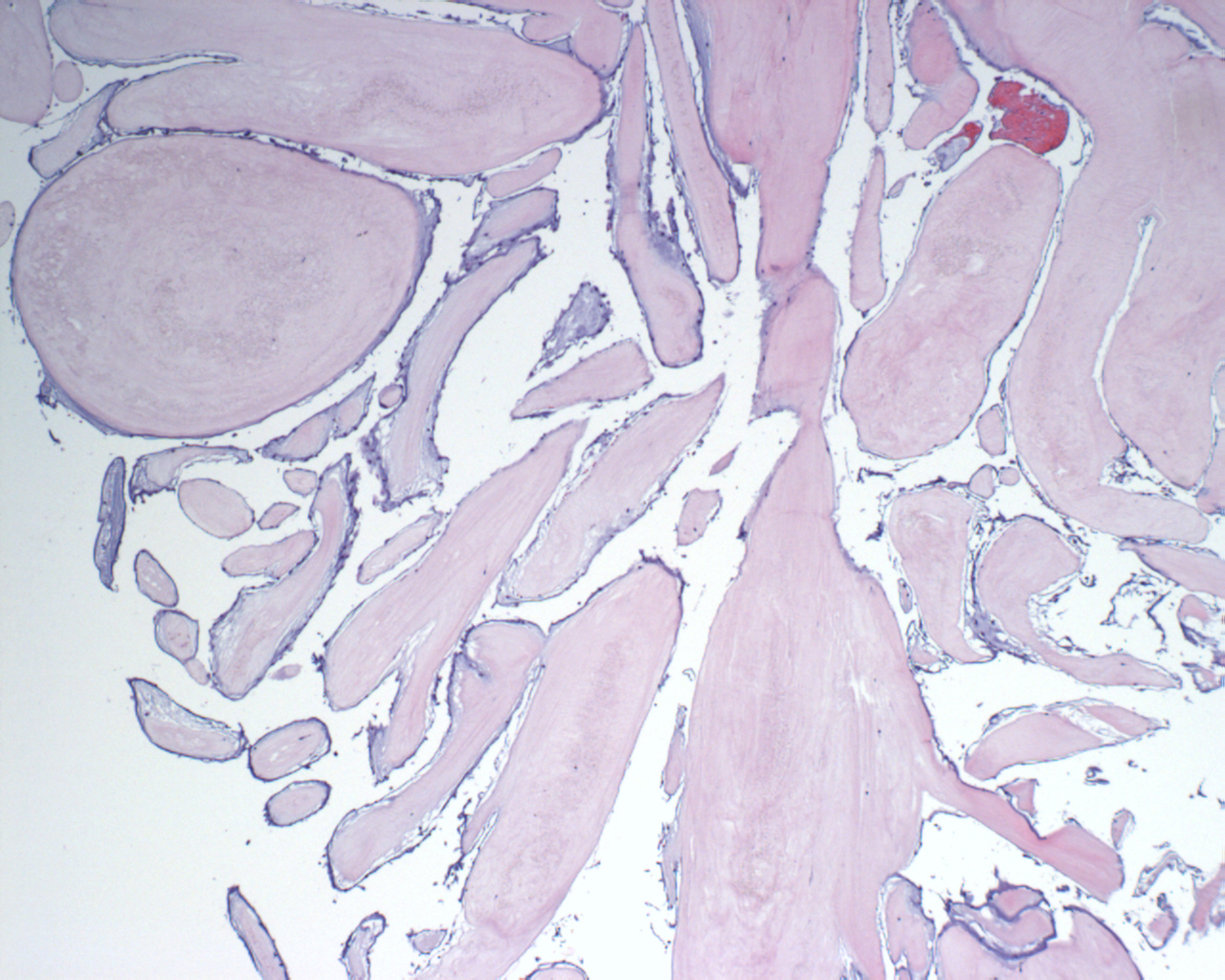

Avascular papillary fronds are a key feature.
The branching fronds are lined by endothelium. The vast majority arise from the valvular endothelium.
The endothelial lining is delicate and bland.
Papillary fibroelastoma is the second most common cardiac tumor after myxoma. The tumor is often attached to the aortic valve, and less frequently to the tricuspid, mitral, and pulmonary valves. Most cases of papillary fibroelastoma are asymptomatic and discovered incidentally, however, some tumors may embolize, leading to angina, myocardial infarction, stroke or sudden death (Bottio).
Grossly, the tumor is described as similar to a sea anemone with multiple projecting fronts. Histologically, avascular papillae are lined by endothelium.
Presentation is variable, from asymptomatic to thromboembolic complications, myocardial ischemia, and infarction. Echocardiographic features typically show a small, mobile mass with a pedicle attached to avalve or endocardial surface and a frond-like appearance.
Surgical excision is indicated even for the asymptomatic patient. Excision is curative.
While benign, the lesion does have a very high risk of embolic complications including neurological deficit.
Bottio T et al. Echocardiographic Diagnosis of Aortic Valve Papillary Fibroelastoma. Tex Heart Inst J. 2004; 31(3): 322–323.